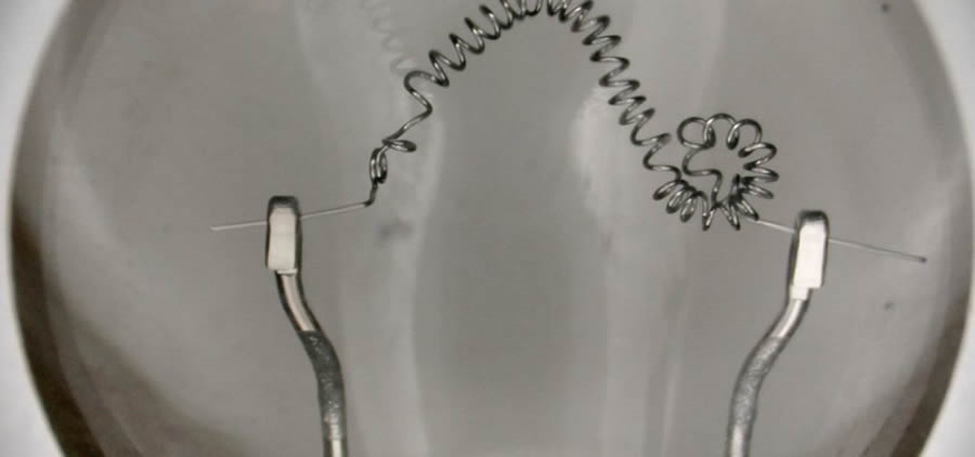
HOUSTON AUTO APPRAISERS – Vehicle Lamp / Bulb Filament Inspections.
Bulbs produce illumination by allowing electrical power to flow through a filament with a closed environment free of oxygen. Because there is no oxygen present in a bulb, the filament does not burn up. Instead, it glows when provided with the right amount of power.
In the process of being incandescent, the filament takes on many of the traits of molten metal. It softens and becomes somewhat pliable. This means that when it is exposed to sudden shock while hot, the filament can become deformed in response to the shock. This deformation is called HOT SHOCK, and is one of the conditions Houston Auto Appraisers identifies in order to establish that a light bulb may have been illuminated at the time of a crash.
If you have ever broken a light bulb while it was powered up, you’ve experienced this weird science. Exposed to oxygen, the incandescent filament will quickly oxidize. As it does so, it gives off a by-product of oxidation known as tungsten trioxide. The tungsten trioxide appears as a smoky residue that quickly coats surrounding parts and material in he form of fine, white powder that is ash-like. The presence of this material in or near a broken bulb always means the filament was incandescent in the presence of oxygen.
HOT SHOCK – This is deformation if a “hot” filament as a result of the filament being exposed to collision forces challenging the inertial if the filament. The coil like appearance of the filament gives way to “hay-wire” appearance showing bending and distortion of the filament.
COLD SHOCK – Filaments are fragile when cold, and they are brittle. A collision force in the vicinity if a cold filament will frequently cause a clean fracture in the filament, often in multiple locations.
HOT BREAK – Should the filament break while power is flowing through it, the power will “arc” across the fracture long enough to cause the ends of the filament at the fracture location to bead up. The presence of metal balls or beads at the ends of the fracture site is an indication of illumination at the time of fracture.
OXIDATION – The presence of tungsten trioxide on the remains of a broken lamp assembly is a positive indication that the lamp was incandescent in the presence of oxygen.
AGE SAG – It is common for filaments to sag uniformly with use and age. The sag will be towards the ground in the direction of gravity’s influence.
GLASS PARTICLES – A hot filament can serve as a repository for microscopic glass fragments produced by the breakage of the glass bulb. The fragments will stick to the hot filament and remain trapped on the metal as the filament cools down. The presence of glass particles means that a bulb was burning, and even points to the particular filament that was incandescent.
Houston Auto Appraisers has been retained by Lawyers, Insurance Companies and Investigators to determine if a subject vehicle’s lights were incandescent immediately prior to a collision. We specialize in Halogen Bulbs, Xenon HID Bulbs, Led Bulbs, Styling Bulbs, Eco and Long-Life Bulbs.
Turn Signals Lights – Were they on or off?
Hazard Lights – Were they on or off?
Headlights – Were they on or off?
High Beams – Were they on or off?
